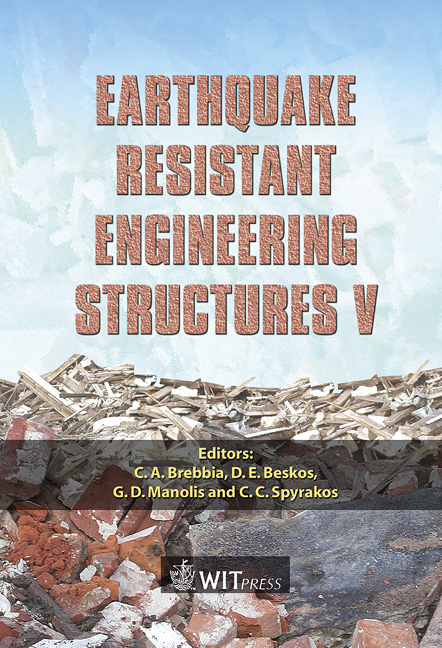Earthquake Analysis Of Multidrum Columns
Price
Free (open access)
Transaction
Volume
81
Pages
11
Published
2005
Size
2,092 kb
Paper DOI
10.2495/ERES050121
Copyright
WIT Press
Author(s)
D. Konstantinidis & N. Makris
Abstract
This paper presents a numerical investigation on the seismic response of multidrum classical columns. The motivation for this study originates from the need to understand: (a) the level of ground shaking that classical multidrum columns can survive; and (b) the possible advantages or disadvantages of retrofitting multidrum columns with metallic shear links that replace the wooden poles that were installed in ancient times. The study reveals that relative sliding between drums happens even when the g-value of the ground acceleration is less than the coefficient of friction, µ, of the sliding interfaces and concludes that: (a) typical multidrum classical columns can survive the ground shaking from strong ground motions recorded near the causative faults of earthquakes with magnitudes Mw=6.0 to 7.4; (b) in most cases multidrum classical columns free to dislocate at the drum interfaces exhibit more controlled seismic response than the monolithic columns with same size and slenderness; (c) the shear strength of the wooden poles has a marginal effect on the sliding response of the drums; and (d) stiff metallic shear links in-between column drums may have an undesirable role on the seismic stability of classical columns and should be avoided. This paper is an abbreviated version of an extended paper published in the Journal of Earthquake Engineering and Structural Dynamics, Vol. 34, 2005. Keywords: multidrum classical columns, sliding, rocking, seismic response, earthquake engineering. 1 Introduction During the last two decades, the earthquake response of ancient structures has received increasing attention. Of particular interest are the classical temples that
Keywords
multidrum classical columns, sliding, rocking, seismic response, earthquake engineering.





